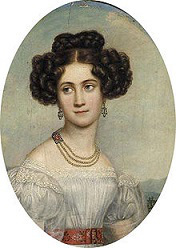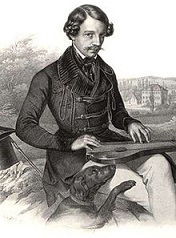Susan Appleyard's Blog, page 18
June 1, 2016
Sisi
Here is the cover of my soon to be released book about Empress Elisabeth (Sisi) of Austria. Isn’t she stunning?
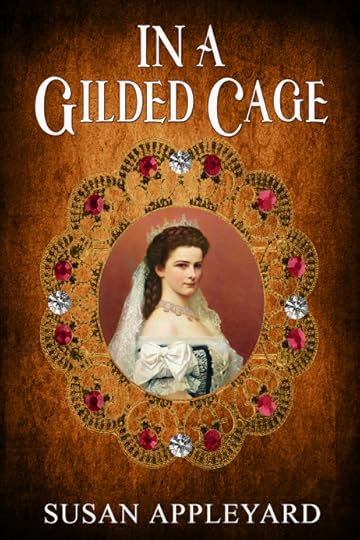


May 25, 2016
Meet the Wittelsbachs
The Wittelsbachs were a family who produced rulers of Bavaria from the 12th century to the beginning of the 20th, as well as spreading their tentacles into other German states and such faraway places Sweden, Norway, Denmark, Holland, Hungary, and Greece. They also provided 2 Holy Roman Emperors and reigned as kings of Bavaria until 1918.
Inevitably, they were much intermarried among royal relatives. Today we know the dangers of intermarriage, so it is no surprise that they produced some… oddities. There were some scientists and soldiers and patrons of the arts, but there was also one lady who believed she had swallowed a glass piano; and of course Ludwig II, the subject of my last two posts who, mad or not, was distinctly odd; and his brother Otto, who was certainly mad; and their grandfather Ludwig I, whose passion for an Irish dancer resulted in his abdication. The list goes on… But when Wittelsbach married Wittelsbach, they passed on to their children dangerous genes.
Such a marriage was arranged for Ludovika, one of seven daughters of King Maximilian I of Bavaria. Every one of Ludovika’s sisters married into a royal house, and she was quite distraught to be given to her second cousin, Maximilian Josef, Duke in Bavaria, a mere nobleman who belonged to a junior branch of the Wittelsbachs. Rumour has it that on their wedding night she pushed her new husband into a cupboard and locked the door. If true, it was not a very auspicious beginning.
With adequate means, but no responsibilities, Max lived as he wished, which is to say gaily and irresponsibly. Surrounding himself with artists and writers, generally men of humble birth, he frequented the local taverns, playing his zither and singing bawdy songs. He also promoted folk music, wrote plays, poems and anonymous political articles for the liberal press. Above all, he adored the circus, and invited the Renz circus to perform every year at his palace in Munich. When the mood took him he would go off hunting in Styria or Silesia, or to the South of France or Greece, usually accompanied by a young mistress. His peccadillos provided much gossip for the bored aristocrats of Munich. In spite of these flaws, he had great charm and his children adored him.
Not so his wife. She never could forgive him for being a mere duke. In spite of their differences, they managed to produce eight healthy children, one of whom was Empress Elizabeth (Sisi), the subject of my soon-to-be-released book. Whatever Wittelsbach genes Sisi inherited from her parents were compounded when she married her first cousin, Emperor Franz Josef of Austria.
All the children of Max and Ludovika were highly-strung, nervous, at times merry and excited and then falling into moods of dark despair or rages or passionate tears. Many seemed to suffer from migraines, as Ludovika did.
I will introduce some of these children in the next weeks.
Visit my author page at Amazon: http://www.amazon.com/Susan-Appleyard/e/B00UTVMT5Y
Or my blog: www.susanappleyardwriter.wordpress.com
My facebook page: https://www.facebook.com/susan.appleyard.9


May 19, 2016
A royal mystery
In my last post I introduced you to Ludwig II of Bavaria. Ludwig’s death is steeped in mystery. What we know is this. On June 10th 1886, he was officially deposed. Two days later he was placed in custody and conveyed to Berg Castle, his summer home on Lake Starnberg. At 6:30 p.m. on the evening of June 13th, he went for a walk along the lake side path without any aides in attendance, only Dr. Bernhard von Gudden, one of the doctors who had pronounced him insane without examining him. It was Dr. Gudden who decided they were not to be accompanied. Both wore overcoats and carried umbrellas. When they did not return by eight p.m. as expected, a search was made. Several boats were seen traveling southwards down the lake but nothing was seen of the two men. Everyone in the castle was called to the search. By this time it was dark, windy and raining heavily.
At about ten p.m. one of the searchers found something floating near the edge of the bank. It was the king’s jacket and overcoat, with the sleeves of the jacket inside those of the overcoat, as if they had been shed in a hurry. The two umbrellas were found nearby on the bank. The two hats were discovered on the shore line as if they had been washed up by the waves. The searchers concentrated on the area. Soon the king’s body was found floating face down. Gudden’s body was found a few paces away. Both were in shallow water near the shore.
Artificial respiration failed; they had both been dead for some time. Ludwig’s watch had stopped at 6:54 p.m., the doctor’s at 8:00. It was observed by those present that Ludwig’s body showed no sign of injury, while Gudden’s had scratch marks on forehead and nose and a bruise over the right eye. Also, the nail of his right finger was half torn off. Gudden’s death is recorded as being by drowning. Ludwig’s cause of death was left blank.
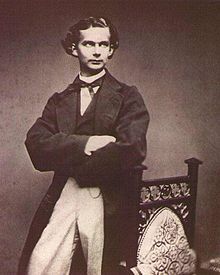
What on earth happened out there? It’s a mystery to me. There are three theories: Ludwig was murdered, committed suicide, or was felled by something like a heart attack. But what about the doctor?
If Ludwig had a heart attack or some kind of physical collapse, did he take his coat off first or afterwards? Why would he wander into the lake? Why did the doctor drown? This is a very unlikely scenario.
Was he murdered? He had been deposed, so it is possible that his supporters might have organized a rebellion and caused civil war. So the king was drowned and Doctor Gudden had to die also and got his injuries while trying to defend either himself or the king. There are a couple of things wrong with this theory, as there is with the others. First, Ludwig was aged 41, a big man at 6′ 4″, although he was getting fat. He would have put up a fiercer struggle than the diminutive Gudden. Yet there were no injuries on his body. Also, official examiners looked carefully at the lake bed in order to determine what happened. Only the 2 sets of footprints were visible.
Conspiracy theorists claim that his coat had two bullet holes in it. That suggests that someone shot him and then took off his coat and jacket and hauled him out into the lake and then drowned Gudden without leaving any footprints behind. Clever! The coat has since perished in a fire. Also, I have read that there was no water in his lungs at autopsy, that he was seen with blood leaking from the corner of his mouth, that two fishermen heard gunshots on the fateful night etc.
Did he commit suicide? He had certainly threatened to do so. The examiners determined that Ludwig went out into the lake first, followed by Gudden. After 20 or 30 paces, the churned up mud showed that a struggle had taken place there. Then Ludwig continued on into deeper water alone. There he drowned. His body then drifted back toward the shore as evidenced by the marks left by his dragging feet on the lake bed.
Here is my theory, although it doesn’t answer all the questions. After his deposition Ludwig knew he was going to be a virtual prisoner for the rest of his life. The windows of his apartment in Berg Castle had been fitted with bars. The door had been fixed so that it could only be opened from the outside and peepholes had been drilled in it so that he would always be under observation – unbearable for a recluse. I believe he wanted to commit suicide. He went out into the lake. Gudden followed him in order to prevent the tragedy. There was a struggle and Ludwig struck the doctor in the face, possibly knocking him unconscious, before continuing on into deep water. It is also possible that the doctor, facing ruin because he had lost his illustrious patient, chose suicide also. This doesn’t explain the discrepancy in the stopped watches – unless the doctor thought about his dilemma for a full hour before deciding to act. Nor does it explain why Ludwig took his coat off.
Like the murder of the Princes in the Tower, the debate will go on. There are few things more compelling than a historical mystery.


May 11, 2016
Interview with B.R.A.G. Medallion Honoree Susan Appleyard
 I’d like to welcome B.R.A.G. Medallion Honoree Susan Appleyard today to Layered Pages. Susan was born in England, which is where she learned to love English history, and now lives in Canada in the summer. In winter she and her husband flee the cold for their second home in Mexico. Susan divides her time between writing and her hobby, oil painting. Writing will always be her first love. She was fortunate enough to have had two books published traditionally and is very excited about soon publishing her fourth ebook.
I’d like to welcome B.R.A.G. Medallion Honoree Susan Appleyard today to Layered Pages. Susan was born in England, which is where she learned to love English history, and now lives in Canada in the summer. In winter she and her husband flee the cold for their second home in Mexico. Susan divides her time between writing and her hobby, oil painting. Writing will always be her first love. She was fortunate enough to have had two books published traditionally and is very excited about soon publishing her fourth ebook.
Susan, how did you discover indieBRAG?
Hello, Stephanie, and thank you for giving me the opportunity to introduce myself and my work.
I first came across IndieBrag through an author posting in one of my groups about her success in winning a Brag Medallion. I submitted one of my books and soon I was the one doing the ‘bragging’.
Tell…
View original post 818 more words


May 7, 2016
Ludwig II – mad or just eccentric?
Judging solely by his portraits he does look a little mad – those eyes. But according to his contemporaries he was handsome with beautiful eyes. Standing 6′ 4″ with an athletic build, he had pale skin, dark hair and blue eyes. He is often referred to as the mad king, but also sometimes as the fairy king or the swan king.

Ludwig was born on 25th August 1845 at Nymphenburg Palace in Munich, the eldest son of Maximilian II of Bavaria and his wife Marie of Prussia. Maximilian belonged to the house of Wittelsbach, notorious for the eccentricities of some its members. (This may be accounted for by the fact that the Wittelsbachs were much intermarried, which was common at the time. One of Ludwig’s relatives had married her own nephew. There are numerous examples of marriage between cousins.) Maximilian cannot be numbered among the eccentrics. He was given to cultural and intellectual pursuits, attended diligently to the duties of his office, and was in general an able and wise king.
As a father, however, he was austere and remote. Ludwig was close to neither of his parents. He, and his brother Otto, saw them only once or twice a day, usually at mealtimes. King Max believed harsh discipline was needed to build strength of character in his boys. He could not understand Ludwig’s sensitive and romantic nature. Queen Marie visited her sons for an hour every day when they were young. As if to compensate Ludwig had a close relationship with Otto, three years younger.
As he grew up, Ludwig developed an interest in the arts, music, and building, but little in politics and his royal duties as heir. His daily life was strictly controlled. Some of his happiest times were spent with his cousins at Possenhofen, where he formed a lifelong friendship with his cousin Elisabeth (Sisi) later Empress of Austria. Sisi was the Dove and Ludwig was the Eagle. They both enjoyed poetry, hiking in the mountains, and horseback riding.
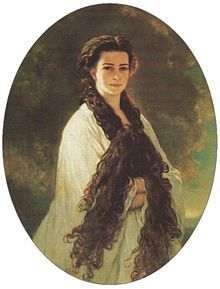
Much of his youth was spent at Hohenschwangau (meaning high place of the swans) Castle in the Bavarian mountains. Perhaps, as he gazed out at the two lakes, his imagination was awakened by this lovely old castle where heroes of German history and folklore came to life in brilliant frescoes painted on the walls. There was Lohengrin, the legendary swan knight, and there the crusader Tannhauser. Knights, swans and water surrounded him and would inspire him for his entire life. He wished he could have lived in such heroic times. When he retreated into his own mind, he could. In imagination he became the swan knight.
When he became king at the age of eighteen, Ludwig was creative and introverted, a dreamer with a boundless imagination, but he preferred the denizens of his own mind to human company and was not prepared for the high office into which he had been thrust. In fact, he avoided participating in government and was happy to leave the business side of his office to his ministers, with whom he was not popular, while he indulged his creative side. Nor did he have any interest in the military.
One of his first acts as king was to summon to his court Richard Wagner. Three years earlier he had attended a performance of the opera Lohengrin that changed his life. What he saw was the murals on the walls of Hohenschwangau, the world he loved, come to life, accompanied by music passionate and sublime.
Each was ecstatic to meet the other, Ludwig because the composer had brought his dreams to life, Wagner because he saw in the king the end of his financial problems.
Ludwig was obsessed with Wagner and his music. Wagner became the Great Friend. It was, Ludwig often said, a friendship of the spirit.
It wasn’t long before Muncheners got a whiff of how far their king had fallen under the spell of Wagner, when the two proposed to build a vast new theatre especially designed for Wagner’s epic operas. Wagner provided the design, Ludwig was to foot the bill. The scheme came to nothing when treasury officials refused to pay. Throughout Wagner’s life Ludwig advanced him monumental sums with no thought of repayment to the growing consternation of his ministers and subject. Without Ludwig’s patronage it is doubtful if Wagner would have achieved the success he did.
So what, you might ask, was the nature of Ludwig’s eccentricity? Well, he did have made a dining room table that sank into the floor, and he did create a lamp with the moon and planets circling it. He dined out of doors when it was cold and wore heavy overcoats when it was warm. He was often abusive and threatening to his servants. Oh, and he became engaged to Princess Sophie, younger sister of Sisi, and then jilted her just before the wedding, which was a terrible thing to do to a young girl in those days. He never married. It’s possible he had homosexual tendencies. There were rumours to that effect, borne out by a succession of friendships with young men throughout his life. Still, nothing in all that to suggest insanity. There must be something… Wait! Neuschwanstein! That fairytale castle built high in the Bavarian mountains. If you are a romantic you will see in its soaring turreted towers the beauty of its designer’s fantastic vision. On the other hand if you are of a more pragmatic nature you will perhaps view it as an extravagant folly. Either way you must admit it is so Ludwigian! But a sign of madness..?

Neuschwanstein, and other building projects, were paid for out of Ludwig’s private funds. Nevertheless, his free-spending habits came close to bankrupting the country. His ministers tried to curb him but he would not be stopped. Instead he considered dismissing his entire cabinet and getting new men in. Well, perhaps that was a little mad.
The ministers decided to act first. Grounds for deposition were sought in his sometimes bizarre behaviour. His uncle, Prince Luitpold was asked to act as regent if the king was deposed. Luitpold agreed, on condition sufficient proof was provided that Ludwig was hopelessly insane. The ministers were not above bribing servants and those inimical to the king in order to get the necessary proof. A medical report was compiled by the ministers and furnished to a panel of four doctors. They concluded that the king suffered from paranoia, which made him unfit to rule. Only one of these men had met him, twelve years earlier, and none had examined him.
Poor Ludwig! It was enough to force his deposition.
Ironically, after his death, he was succeeded as king by his brother Otto, who had been diagnosed as mentally ill years earlier by one of the same doctors. Luitpold remained regent until his death in 1912, when he was succeeded by his son, also called Ludwig. Regent Ludwig deposed Otto, who was still held in confinement, and had himself crowned king as Ludwig III.
Sisi Empress of Austria is the subject of my upcoming book In a Gilded Cage.


April 16, 2016
A Conversation with Author June Moonbridge
Today in the Library we have June Moonbridge, who has dropped in to say hello and to share some insights into her life as an author.
You are very welcome, June, please introduce yourself:
 June Moonbridge is my pen name. I come from Slovenia, a little country in the middle of Europe. So I apologise for all the grammar mistakes I’ll definitely make, as English is my second language.
June Moonbridge is my pen name. I come from Slovenia, a little country in the middle of Europe. So I apologise for all the grammar mistakes I’ll definitely make, as English is my second language.
I’m a full time working mother with two children and a husband. My biggest wish is to have a black cat (yes, my daughter still thinks I’m a witch!) and an Irish wolfhound, but I choose not to until I will have enough time for both.
My writing started over two decades ago, when my teacher criticised everything I wrote. Being stubborn, I started to publish short and not so short stories in magazines just to get back honest reviews –…
View original post 859 more words


April 15, 2016
Some interesting people
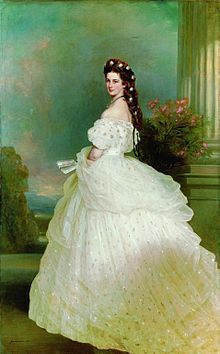
Here is the stunningly beautiful Elisabeth Empress of Austria, known as Sisi. I am currently working on a novel about her, which I hope to publish this summer. Not only is Sisi an interesting – and challenging – protagonist, but during my research I discovered a few other interesting people whose lives touched hers. I will introduce you to them in succeeding weeks.
First among them is her cousin Ludwig II, King of Bavaria, also known as the Swan King or the Mad King, with whom she had so much in common. Both were young people trapped in roles for which they were unsuited and unable to adapt. Then there are her father, quite a few of her siblings, the statesman Otto von Bismarck, Count Andrassy, the man she loved, and others.
Presently I am travelling home from Mexico to Ontario (via Las Vegas). Once home I will begin.


April 4, 2016
And the winner is:

Celticlady!
The excerpt is true and the winner has been contacted. Celticlady was among those who guessed correctly. Thank you to all those who participated.


April 1, 2016
April Fool Blog Tour
Each author is presenting a scene that may, or may not, be from their book. Take a good guess, make a careful choice, and decide for yourself if true or an April Fools jest. Look for authors offering book giveaways and enter their raffles. Be sure to visit the IndieBRAG Website to enter for the Grand Prize – a $50.00 Amazon Gift Card!
Grand Prize and book giveaways start April 1st. The winner of the $50.00 Amazon Gift Card will be announced on April 5th on the indieBRAGWebsite. each author will announce the winner for their giveaways on their sites at the date of their choosing.
The chance to enter for the prize and giveaways ends April 4th.
You must be 18 years or older to participate in the prize & giveaway.
Giveaway is open internationally.
Winner has 48 hours to claim prize and giveaway or a new winner is chosen.
indieBRAG Event Page
The First Plantagenet – true or false?
It began with belly cramps and loose bowels, common enough afflictions when water was often foul and tainted meat served disguised by heavy sauces, and seldom proved fatal except in the very young or the very old. There were days when he seemed well, rode for hours, his usual good-natured self. But the symptoms returned, grew more severe, until at Martel, a small town just north of Rocamadour, he took to his bed. In the night the fever came. A physician was found who got a potion into him. His friends, his intimates, watched over him, bathed his face, cleaned him and changed his linen when he soiled himself. In the morning the fever was gone. That day he joined his knights for dinner and it was hoped he was over the worst, but he didn’t eat and he was very weak. By then he looked wasted, his cheeks hollow, his eyes sunk in dark caverns, his complexion ashen. That night the fever returned and with it delirium, and when his friends tried to clean him they wept to see his feces mixed with blood.
During lucid periods, Harry expressed his agony over his sins and his fear of damnation. He begged them to send to his father, whom he had so deeply offended, contrary to the decrees of Heaven itself.
Messengers told King Henry his son was gravely ill. They spoke of dysentery, fever. They said he was unlikely to live and he begged his father to come so he could obtain his forgiveness. Henry didn’t believe them. No one believed them. He was loudly reminded of the bolt stuck in his mail and the one that lodged in Geoff’s shield, the deceit, and the betrayals. He sat in silence, not really listening, but remembering Harry as he last saw him, in the bailey at Mirebeau in all his glorious young manhood, his face shining, his hand lifting in farewell, his heart full of evil. Henry knew how it would be: he would arrive to find a miraculous recovery had taken place, and Harry would cozen him with tears and smiles and all that boyish charm that he knew how to use to such effect.
The messengers tried to assure him it was no trick, but he sent them away. Then Henry was beset by doubts. Was it just his suspicious nature asserting itself? What if Harry really was dangerously ill? How could he ever forgive himself for not answering that plea? He was tormented by the image of his dying son waiting vainly for him to arrive, dying without the consolation of knowing that he was forgiven and loved even to the end. He could not bear the suspense. Twice he changed his mind and gave orders for an escort to accompany him to Martel, only to be persuaded to stay by those who were convinced that Harry was once again trying to take egregious advantage of his father’s trust.
In order to be entered to win a copy of my ebook The First Plantagenet, just answer this simple question. Is this a true event in the life of King Henry II or an April Fool.
Winner will be announced on April 4th.


March 30, 2016
April Fool Blog Tour

Hello, on April 1st IndieBrag are hosting a blog hop. (This will be my first.) Be sure to check back here on that date to learn about the prizes and rules, and for your chance to win a copy of the participants’ books, including my own latest, The First Plantagenet, a novel about King Henry II.



